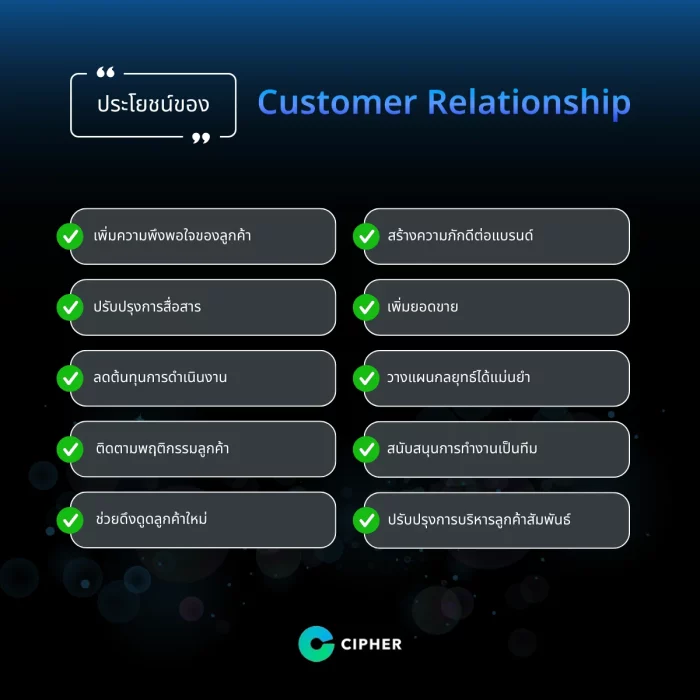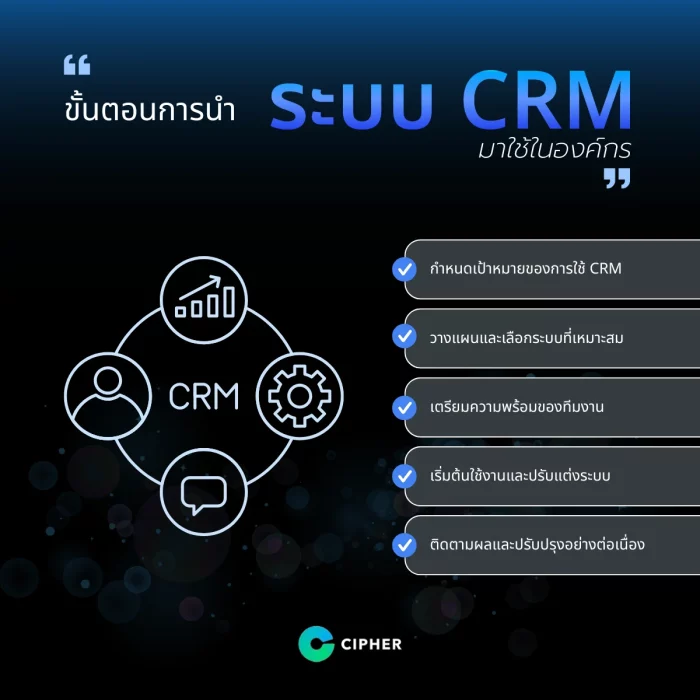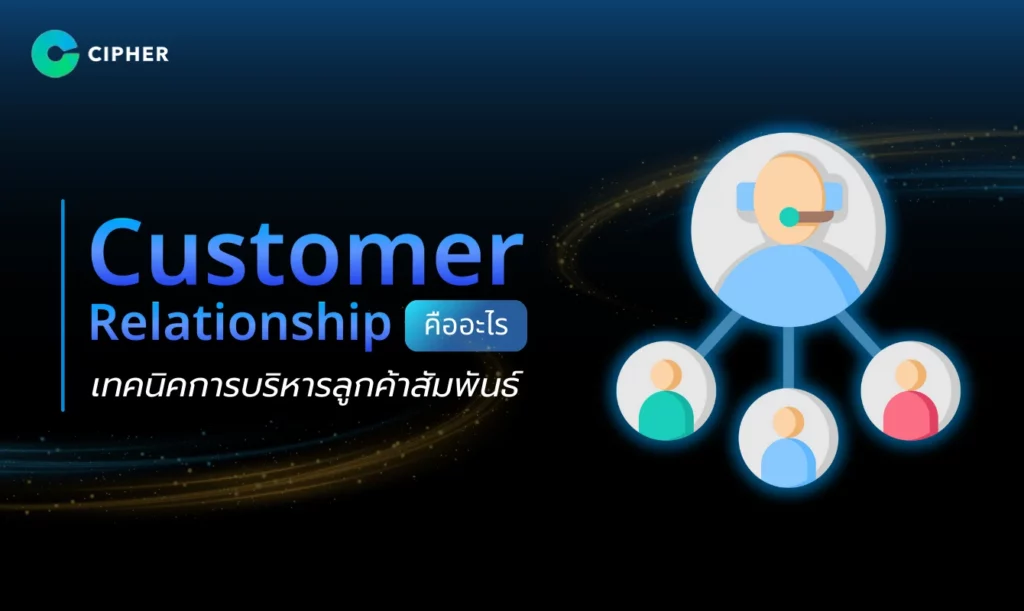Table of Contents
What is Customer Relationship? Understanding Integrated Customer Relationship Management
Building good brand relationships with customers, Customer Relationship is one of the most powerful strategies to enhance communication efficiency and enhance customer experience. The use of CHIPHER’s CRM system is an excellent example for managing customer information and enhancing relationships through CRM email marketing. To impress and enhance brand loyalty.
If you’re looking for ways to increase sales and maintain customers’ longevity, email marketing and CRM training can help you develop the skills and strategies you need to take care of your customers professionally. In this article, you will deepen your customer relationship and introduce techniques that help your business grow.
What is Customer Relationship?

Customer Relationship is about building and maintaining good business relationships with customers. The main goal is to ensure that customers are satisfied and loyal with business products and services, ranging from communication, customer response to lasting impression. How to build relationships may include providing excellent services. Promotions tailored to the needs of each customer and consulting or helping solve problems quickly.
Customer Relationship is about understanding customers deeply and making them feel important to their business. When customers are satisfied and well cared for, the opportunity for them to re-buy or re-introduce your products and services to others will increase. What will contribute to sustainable business growth in the long run?
So what is Customer Relationship Management? Why do businesses need to give it importance? We will find the answer in the next topic.
Why do businesses need to give importance to CRM?
CRM stands for Customer Relationship Management. CRM is customer relationship management. Businesses need to give importance to it because it is an important strategy that helps create good and sustainable relationships with customers, which is the heart of creating a competitive advantage in today’s highly competitive market. Customer Relationship Management is something that helps businesses deeply understand the needs, behaviors, and expectations of customers in order to provide products and services that meet individual needs, create satisfaction, create sales opportunities or Lead Generation, and return to buy again or recommend the business to others.
Benefits of CRM
CRM is a system that helps increase efficiency in managing customer data and helps manage customer relationships better. The benefits of CRM include:

- Increase customer satisfaction: It helps businesses to respond to customer needs quickly and precisely.
- Build brand loyalty: It helps retain current customers to return and refer them.
- Improve communication: It helps to make contact and communication with customers systematic and efficient.
- Increase Sales: analyze customer information to create additional sales and sales opportunities from Up-Selling and Cross-Selling.
- Reduce operational costs: Helps efficiently manage data and processes, reducing unnecessary resource consumption.
- Accurate strategic planning: Using in-depth information from the CRM system is a critical system that helps make decisions and plan marketing.
- Monitoring customer behavior: Helps collect in-depth information such as purchase history or contact in order to improve service delivery
- Supporting teamwork: enabling effective collaboration between sales, marketing and customer service teams.
- Help attract new customers: CRM helps analyze and plan to attract new customers.
- Improve customer relationship management: Making problem and complaint handling faster and smoother
How business-friendly is CRM?
CRM or Customer Relationship Management is a system suitable for businesses of all sizes, from small businesses to large enterprises. CRM is a systematic tool for managing customer information, enabling small businesses to use CRM to manage customer databases, track communications such as calls or email. And build strong relationships with customers using limited resources cost-effectively.
For large businesses with a large customer base, CRM helps organize complex data levels such as customer behaviour analysis, market segmentation, and forecasting future customer buying trends, enabling organizations to quickly and accurately align their marketing plans to meet customer needs.
In addition, CRM provides seamless collaboration between sales, marketing and customer service teams, which is a key factor in improving customer satisfaction. CRM is a system that helps manage customer relationships effectively.
Customer Relationship has an important component. Anything?
Customer Relationship is the concept of enabling effective marketing that requires many key elements to build good customer relationships and promote business loyalty. The key elements are:
- Customer Information Management: Systematic collection and management of customer information such as name, address, contact number, purchase history and usage behavior helps businesses understand the needs of each customer and offer the right products or services at the right place.
- Efficient Communication and System: Businesses must create a variety of communication channels, such as email, phone or social media, to make their customers more convenient to communicate and send messages that match their interests.
- Friendly Service: Responding to customer needs quickly and effectively solving problems will help to impress and strengthen trust in the business.
- Data Analysis and Improvements: Using customer data to analyze behavioural trends such as re-purchase or decommissioning, and use analysis results to continuously improve products or services.
- Establishing long-term relationships: Maintaining good customer relationships such as offering privileges, follow-up after sales, and showing interest will help build loyalty and encourage customers to resume their services.
The process of implementing the CRM system in an organization
Effective implementation of the CRM system requires systematic planning and implementation, which can be divided into 5 main steps as follows:

Step 1 Determine the goal of using CRM.
Step 2 Plan and select the appropriate system.
Step 3 Prepare the team.
Step 4 Getting Started and Configuring the System
Step 5 Follow-up and continuous improvement
Summary
Customer Relationship is a key strategy that focuses on satisfying customers’ needs. In addition to increasing sales, customers’ confidence and long-term brand loyalty should be focused on using technology and information to analyze and understand customers. In order to improve the service process and ensure that it meets the needs of customers.
Frequently Asked Questions
CRM location is What?
The CRM position, or Customer Relationship Manager, is an organizational role that is primarily responsible for managing customer relationships or managing customer relationships using appropriate strategies and tools to increase customer satisfaction, build long-term relationships and support business goals. The main functions are as follows:
- Plan and develop CRM strategies: Create and define strategies to improve customer experience, such as customer segmentation, in-depth analysis and group marketing campaign design.
- CRM Management: Customizing and customizing CRM systems for enterprise operations, connecting with sales, marketing and customer service teams.
- Analysis and use customer information: Use customer information such as purchase history, usage behavior and requirements to design campaigns or offerings that suit and create satisfaction.
- Improve customer relationships: monitor customer problems and satisfaction and seek solutions to maintain good relationships and build long-term trust.
- Training and team coordination: Help relevant teams, such as sales or customer support, understand the goals and use of the CRM system correctly to coordinate their work effectively.
The CRM software is What?
CRM, short for Customer Relationship Management Software, is a system that helps organizations effectively manage customer relationships by collecting customer information such as contact history, purchasing behavior and needs for use in sales, marketing and customer service.
This software simplifies customer tracking, strengthens relationships and supports decision-making of enterprise strategies and marketing plans. Examples of popular CRM software such as HubSpot.
How does CRM benefit the business? Any?
CRM, or Customer Relationship Management, is a system that benefits businesses in many ways by improving customer management efficiency and promoting long-term corporate success. Key benefits include:
- Increase Customer Satisfaction: CRM enables businesses to track customer information and behavior in real time, enabling them to respond quickly to customer needs.
- Sales and Marketing Support: CRM enables sales teams to efficiently manage sales processes such as tracking leads, where lead is targeted at products and services, and analyzing this information to adjust marketing strategies. Marketing teams can create campaigns that match the target groups and track results.
- Customer Relationship Management and Loyalty: CRM enables businesses to keep track of and maintain existing customers, such as sending thank-you messages, granting special privileges or after-sales service management, which helps build trust and loyalty.
- Improve enterprise operations: CRM enables teams of all parties, such as sales, marketing and customer service, to collaborate seamlessly with updated and complete information in a single system.
- Support decision making: With the CRM data and analysis, management can see market trends, customer behavior and team efficiency, helping to plan and optimize business strategies.
The CRM system does. Anything?
CRM has a variety of capabilities to manage and develop customer relationships, help businesses increase efficiency and achieve long-term success. CRM can do the following:
- Customer Information Management: Collect customer information such as contact information, purchase history, and usage behavior, help manage customer databases in an orderly manner, and help group customers according to characteristics or requirements.
- Sales Pipeline: Help track sales opportunities from start to close.
- Marketing Planning and Implementation: Create and submit specific marketing campaigns such as email or track campaign results, opening email rates or customer responses, and analyze data to improve marketing strategies.
- Connectivity and Collaboration: CRM systems can be linked to other enterprise systems, such as ERP, accounting or marketing tools, enabling both sales and marketing teams to work together on the same data set.





